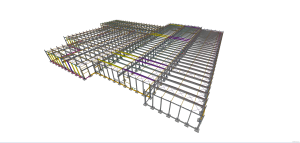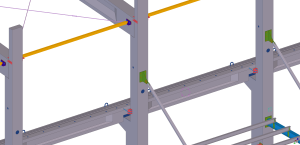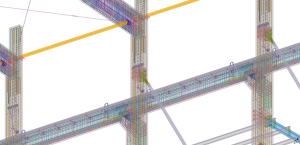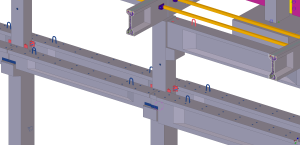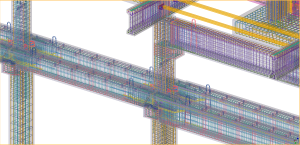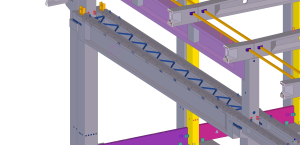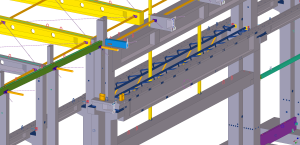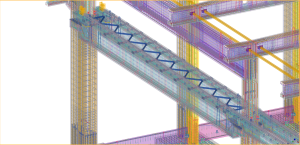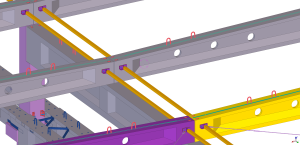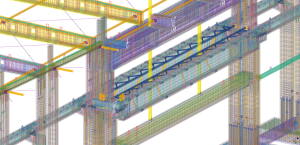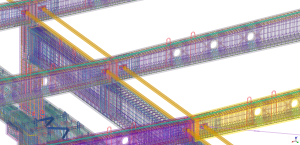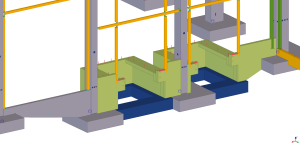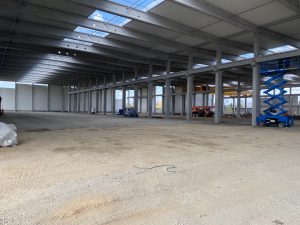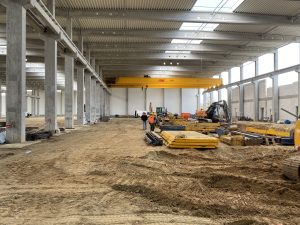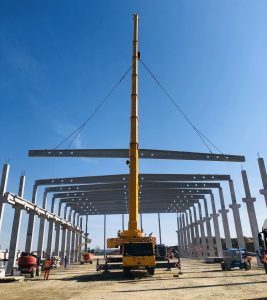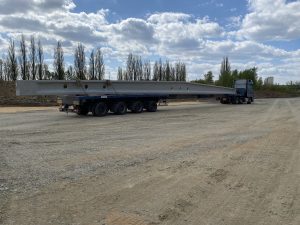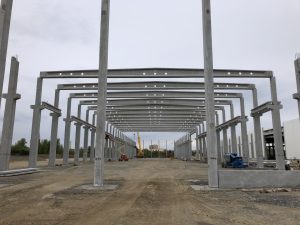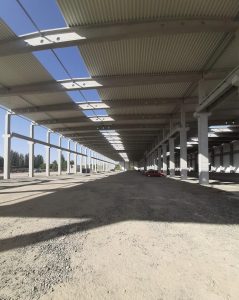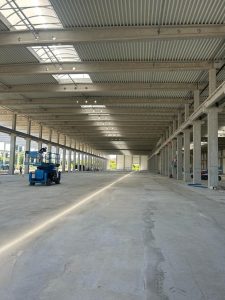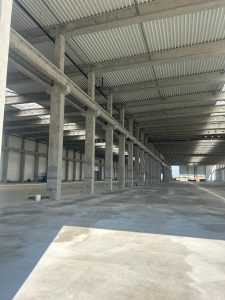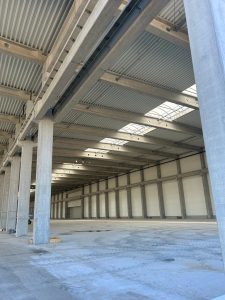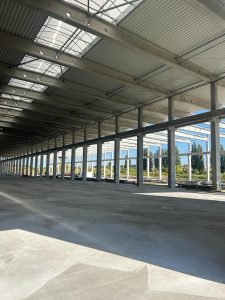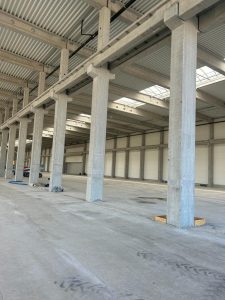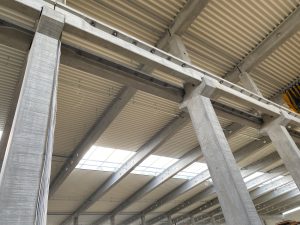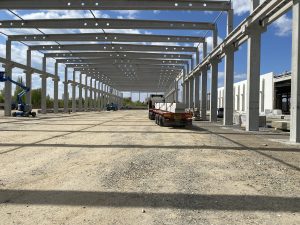Hala usługowa Budmat

| Category | Industrial Projects |
|---|---|
| Year | 2024 |
| Country | Poland |
| Organization | MP ENGINEERING Sp. z o. o. |
| Project partners | Przedsiębiorstwo Produkcyjno-Handlowe GRALBET Sp. z o.o. |
| Author | Paweł Jabłoński |
| Co-authors | Marta Jakubowska, Marta Wielgat, Jakub Holubowicz |
| Place of construction | Polska |
| Tags | PrefabConcreteTekla StructuresSteel |
Prezentowany model przedstawia konstrukcję hali usługowej zlokalizowanej w Polsce. Powierzchnia użytkowa całego obiektu wynosi 34600m2. Hala została podzielona i zrealizowana w czterech etapach. Z uwagi na warunki gruntowo-wodne oraz znaczne obciążenia zaprojektowano wzmocnienie podłoża w technologii kolumn przemieszczeniowych FDC, a elementy konstrukcyjne oparto na oczepach fundamentowych.
Hala we wszystkich nawach posiada tory jezdne oraz suwnice o maksymalnym udźwigu 35 ton. Zaprojektowano sprężone żelbetowe belki podsuwnicowe o przekroju dwuteowym. Wybrane belki podsuwnicowe (o rozpiętości ponad 17 metrów) wymagały wzmocnienia z płaszczyzny poprzez zastosowanie dodatkowych elementów stalowych w postaci kratownic przestrzennych lub poprzez skratowania w płaszczyźnie pasów górnych pomiędzy dwoma sąsiednimi belkami podsuwnicowymi.
Konstrukcję główną dachu wykonano z wykorzystaniem prefabrykowanych elementów sprężonych. Rozpiętość najdłuższego dźwigara sprężonego przekracza 36 metrów, natomiast najdłuższy podciąg sprężony osiąga rozpiętość ponad 17 metrów.
Nasze biuro odpowiedzialne było za wykonanie kompletnego projektu konstrukcji – począwszy od ustaleń i przygotowania modelu obliczeniowego przez wykonanie modelu przestrzennego obiektu, aż po realizację dokumentacji warsztatowej.
The presented model shows the construction of a service hall located in Poland. The usable area of the entire facility is 34600m2. The hall was divided and implemented in four stages. Due to soil and water conditions and significant loads, ground reinforcement was designed using FDC displacement column technology, and structural elements were based on foundation block.
The hall in all aisles has running tracks and overhead cranes with a maximum lifting capacity of 35 tons. Pre-stressed reinforced concrete crane beams of I-section were designed. Selected crane beams (with spans of more than 17 meters) required out-of-plane strengthening by using additional steel elements in the form of space trusses or by in-plane trussing of the top chords between two adjacent crane beams.
The main roof structure was constructed using prefabricated prestressed elements. The span of the longest prestressed girder exceeds 36 meters, while the longest prestressed stringer reaches a span of more than 17 meters.
Our office was responsible for the complete design of the structure – from the findings and preparation of the analysis model through the creation of the spatial model of the building to the implementation of the workshop documentation.



